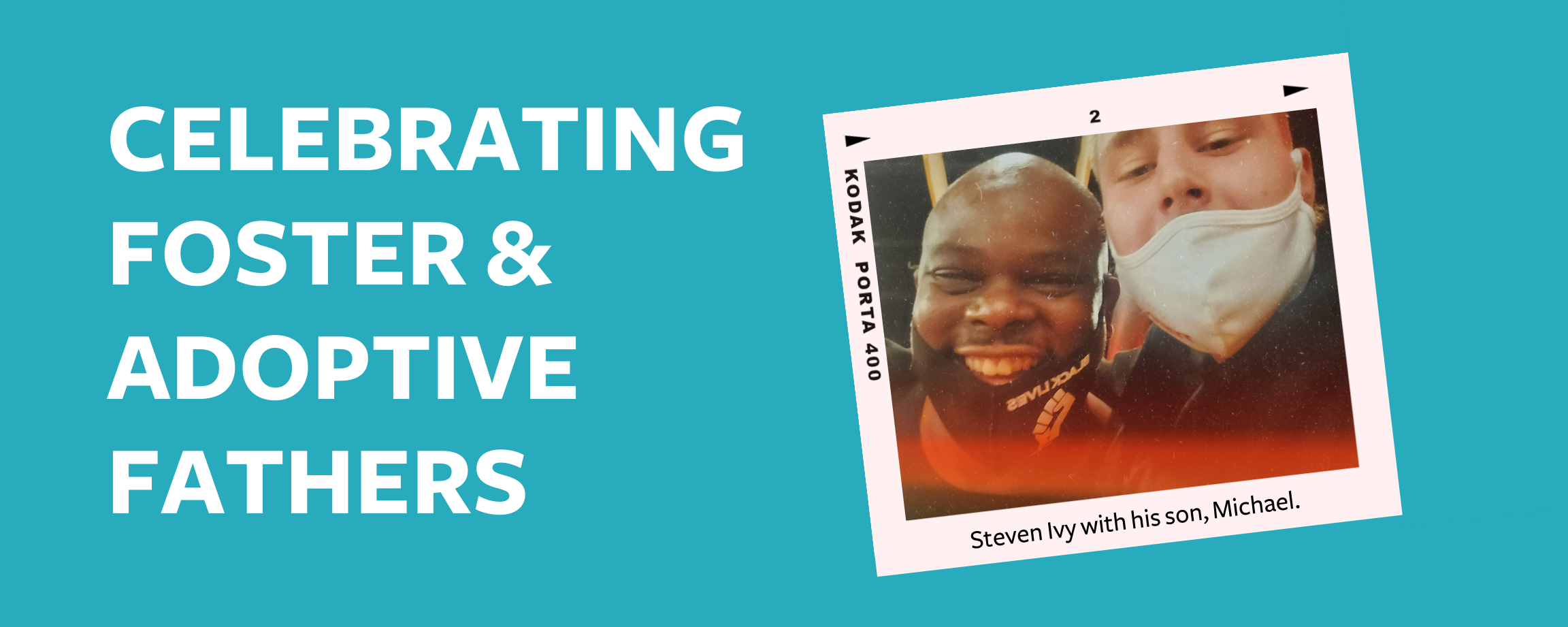
Steven Ivy, foster and adoptive parent, describes the moment when his 17-year-old foster child, Michael, asked to be adopted, as one of the happiest in his life. Michael and Steven wanted to make sure Michael was legally adopted before he entered adulthood, because they felt adoption secured their lifelong family connection. After countless phone calls, meetings, and prolonged efforts by Michael’s DCFS guardian and One Hope United team, Michael’s adoption was finalized the day before his 18th birthday.
“People take for granted things like having a home to return to for the holidays, or a place to go when you’re having a hard time,” said Devin Dittrich, Director of Foster Care for Community-Based Family Services (CBFS) Programs at One Hope United. “Being adopted is different. It gives a child or teenager that legal bond. They can say this is my family regardless of where I am or what happens in life, and Steven and Michael made that commitment to each other.”
Michael and Steven understood each other right away. “We are very similar,” Steven shared. “We bonded quickly in the first year Michael was in my home. The challenges he faced drew me to him. I wanted to make sure he had all the help he needed.”
When Michael suffered an epileptic episode, Steven realized just how much Michael meant to him. Steven said, “I remember sitting on the kitchen floor with Michael’s head in my lap, thinking, my life is not complete without this child in it.”
Michael’s adoption presented significant challenges for several reasons, but because of the efforts of his care team and his adoptive father Steven, who Devin described as “the glue” in this effort, the team overcame every hurdle in finalizing the adoption. Michael and Steven’s story is historic, since theirs is the first case in Cook County that originated in the juvenile justice system and resulted in adoption.
When it seemed like the bureaucratic and legal hurdles may be too great to move Michael’s adoption forward, reached out to the DCFS special attorney on Michael’s case, and asked this simple question: Why would we deny this child the opportunity to be adopted?

The special circumstances of Michael’s situation forced DCFS and OHU to think outside the box. We don’t usually have conference calls every Friday talking about a case, but all of our departments needed to come together to make this adoption happen. It showed a huge commitment from both of our agencies.
– Devin Dittrich, Director of Foster Care for Community-Based Family Services (CBFS)

Permanency is a significant term in the social services sector, because it encompasses so many aspects of what it takes for young people like Michael to build happy and healthy lives as adults. According to the Juvenile Law Center, permanency means young people have built positive, healthy, nurturing relationships with adults who provide emotional, financial, moral, educational, and other kinds of support as they mature into adulthood. Ideally, permanency takes the form of a relationship that has a legal component and provides a parent-child relationship.
Achieving permanency can be incredibly difficult for older youth and teenagers in foster care. According to the National Conference of State Legislators, nearly a quarter of the approximately 442,995 children in foster care are age 14 or older, and more than 15,000 young people age out of foster care at age 18 each year. The era of COVID-19 has only increased the disparity of resources available to young people aging out of foster care. According to Today, of the 18-23 year old’s who are currently in or recently aged out of foster care, 43% either were forced to leave their current housing situation or experienced homelessness or housing instability during the pandemic. On top of that, 55% of these young people reported they were food insecure during the COVID-19 crisis.
“There are teenagers out there who are lost, who no one is willing to work with,” Steven said. “Even at 18, there’s a lot I can do to prepare Michael for the outside world and instill family values in him before he goes out into that world.”
Steven chose to become a foster and adoptive parent, because when he was a kid, he needed a guardian who could provide a stable, loving home. He knows he can be that guardian for young people in similar situations.
Steven was removed from his biological parents’ care at the age of 9, and he aged out of the foster care system at 21. He shared that he felt blessed to be in foster homes with caring people, but because of his younger brother’s behavioral health issues, he and his brother were moved frequently. DCFS tried to keep them together, but eventually he and his brother ended up in different group homes.
As an adult, Steven thinks about the things he saw and experienced in foster homes, and how he could use his lived experience to help kids going through the same things he went through. Steven has fostered 11 children as a single father, and has adopted four young men, the oldest of whom is 21 and the youngest of whom is 14.
While Steven and Michael remain close, Michael struggles with aspects of adulthood. “Ever since he was 5 years old, Michael had basically no boundaries,” Steven said. “It’s tough for him to break that cycle. I’ll continue to work with him to get on a better path, and I’ll always be there for him.”
Steven concluded, “I’ve always wanted a big family – grandkids to come over for Thanksgiving and Christmas. It’s all about family.”
